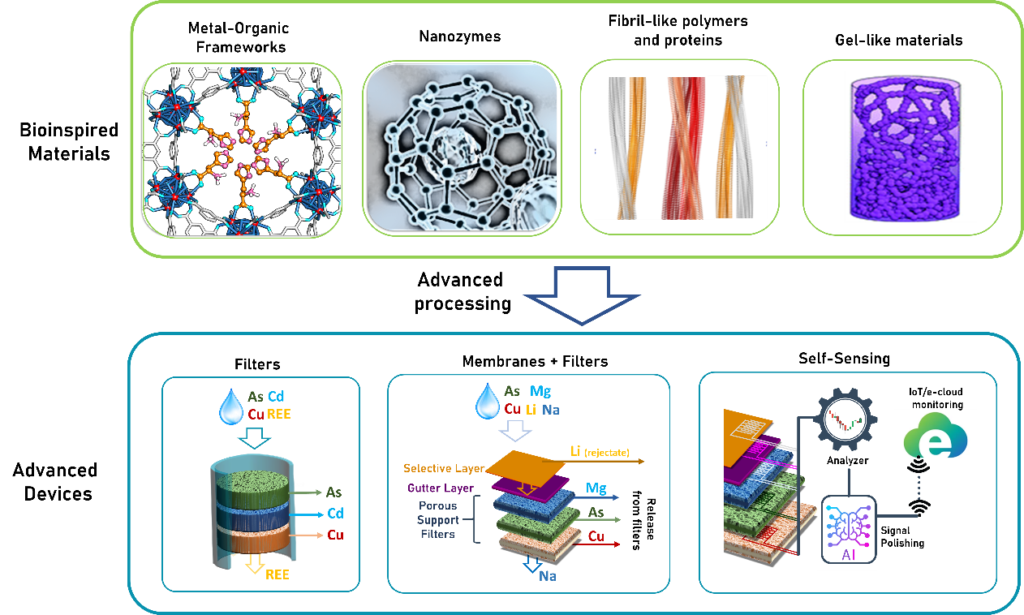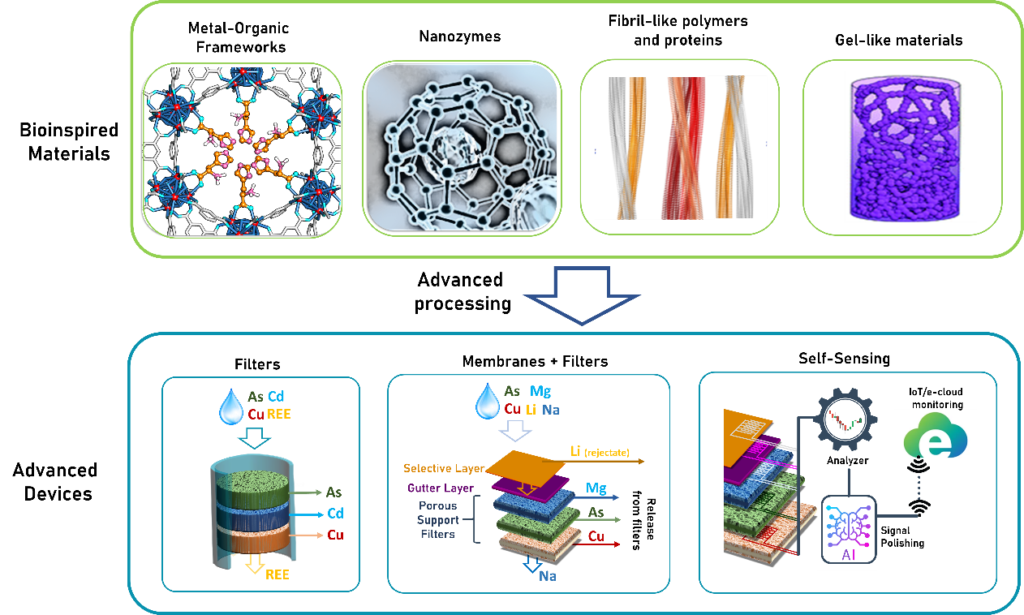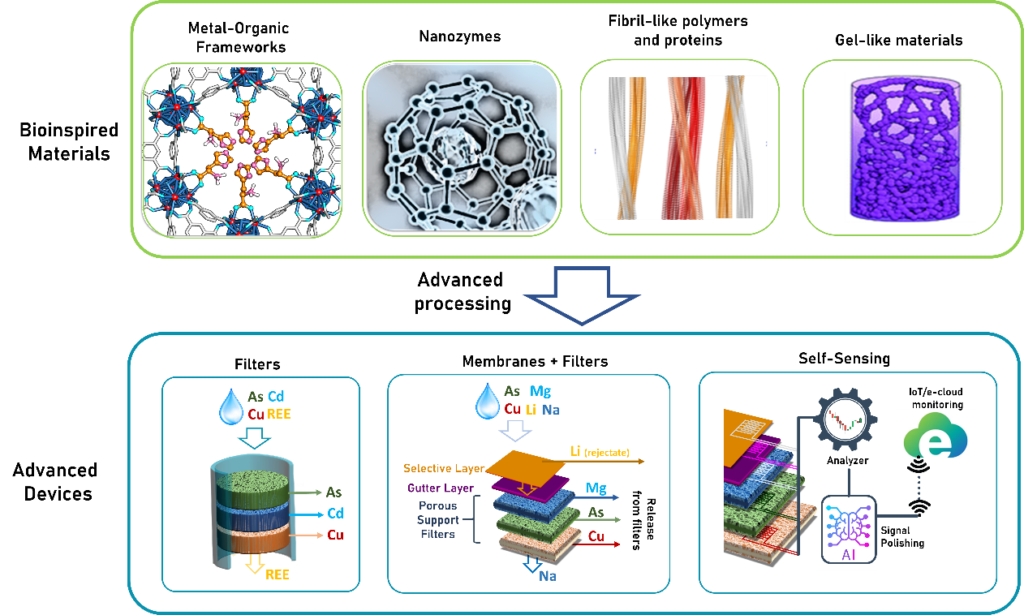The SELFAQUASENS project proposes a technology able to eliminate heavy metals from water, recovering in parallel the valuable elements as lithium, cobalt or rare-earth elements. To this end, the project will assemble by additive manufacturing self-sensing membranes able to monitor the process during and after operation.
Among the myriad of toxics that contribute to water toxicity, heavy metals derived from mining have a huge impact in our environment even at very low doses. In parallel, mines play a pivotal role in the industrial/technical development of our societies. Usually, mining acid drainages or polluted waters are accompanied by critical raw elements (CRE). Today passive disperse alkaline Dispersed Alkaline Substrate (DAS) reactors is one of the technologies (TRL-9) that blocks the scape of these toxic elements from mines. For instance, heavy metals and valuable metals (CRE) are concentrated at different levels of DAS reactors during operation.
So, envisioning a technology able to develop a circular economy for mining water by coupling its remediation to the recovery of valuable resources concentrated in DAS is highly appealing from environmental end economic point of views. SELFAQUASENS project brings key academic and non-academic actors within and beyond EU to develop a modular self-sensing filter and membrane technology able to: (I) remediate heavy metals and salinity pollutions in mining water, (II) couple the remediation to the recovery of CRE and (II) sense the concentration of specific elements or groups of elements during the process.

SELFAQUASENS joints varied interdisciplinary and intersectoral expertise in an International research and training network formed by 5 universities, 2 large scale research facilities, 2 research centers and 2 SMEs. As a result, the R&I system of Europe will be strengthened by an ambitious exchange and training program that covers all the research disciplines, sectors and international actors needed to achieve the objectives of the action. The project will have significant impacts in the short to long terms into the EU society, economy and environment by: (I) pursuing the mission for toxic-free rivers and oceans, creating new sources of CRE for the EU economy, and improving the health and quality of the EU citizens.
The objectives
SELFAQUASENS pursues processing bio-based and bioinspired porous materials by additive manufacturing to shape them as versatile and modular self-sensing filters and membranes able to: (i) prevent and monitor the water pollution coming from mining activities, and in parallel, to (ii) selective recover and separate CREs as LiI, CoII, MoV or REEIII present in these water sources. In addition, SELFAQUASENS technology will be able sense the elements concentrated in the membrane/filter matrixes during operation. That is, the project pursues the development of a self-sensing modular filter/membrane technology coupled to already mature DAS/BDAS process, so overall, SELFAQUASENS will face the environmental detoxification, revalorization and sensing in a holistic manner.
Intermediate objective I: To develop bioinspired “ion” specific porous materials in order to recover highly diluted target elements from complex media where high concentrated competitor species are present,10 and later on, to design an elution or revalorization protocol to re/concentrate, purify or transform it into an added value product. This process will be applied after the DAS/BDAS treatment of AMD, or after eluting the heavy metals and CRE from the DAS and BDAS exhausted reactors.

Intermediate objective II: To process the bioinspired porous materials via advanced manufacturing into a modular-filter o membrane technology able to develop the water-depollution and revalorization in a continuous-flux mode, concentrating the different target elements in (I) the retentate, (II) the specific modules of the SELFAQUASENS membrane of filter device, or (III) at the permeate.

Intermediate objective III: To integrate by additive manufacturing, resistive, capacitive and electrochemical transduction systems into the SELFAQUASENS modules to read the adsorption or transformation process of the target elements and translate them into a measurable electric signal.

Intermediate objective IV: To understand the underpinning mechanisms of SELFAQUEASENS materials and devices to modulate the metal-ions adsorption, migration and photo-transformation via a combination of advanced neutron and synchrotron radiation characterization techniques
